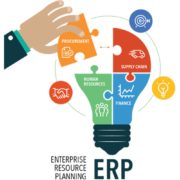How to use Big Data Analytics to reduce company expenses?
Big data is a term that refers to the large amounts of data that literally flood the business on a daily basis. You all must have heard of the phrase “information overflow” – data is literally flowing into business from various channels. Therefore it gets difficult to evaluate it and draw correct and productive conclusions.
Nevertheless, we should mention here that not the amount of data is important, but what organizations can do with it.
Going back in time, we can clearly see that the concept of gathering and consequently analyzing big amounts of information is ages old. The term “big data” though is relatively new. In the early 2000s analyst Doug Laney gave the so called “Three Vs” definition of big data: volume, velocity and variety. Volume is related to the amount of data that organizations collect and the potential to store it. Velocity refers to the speed at which data streams and the need to deal with it in a timely manner. Variety comprises the different types of formats in which data comes.
Having said that, it is obvious that if big data is analyzed properly and systematically, this will lead to better decisions and strategic business moves. Cost reduction is one of the constant goals for companies. So let’s have a look how using big data and data analytics can help in keeping enterprise costs down.
Lessen employee turnover
Many companies use analytics before hiring candidates to check the likelihood of someone aligning with a company’s culture and structure. There are even ways that big data is used to track trends that indicate if an employee is getting frustrated at his current position. Using data analytics in this way can really lesson the instances of employee turnover. The company can avoid the training costs for people who are unlikely to stick around or recognize when one is willing to leave.
Minimize indirect costs
These are related to the company operations and not on the products which are sold. According to statistics, reducing indirect costs could save companies more than 25% of the overall expenses. In all this, big data analytics can provide insights on what are the given company’s most substantial indirect costs Because how could you reduce these costs without knowing on average amount of what spend on particular things each month?
Optimize testing processes
Companies usually go through tests before launching a new product or updating their website. This is done so that failures are avoided later on. Analytics platforms make this process easier and less time-consuming. Many businesses rely on predictive analytics, based on artificial intelligence. This type of platforms contribute to reducing costs, time needed and eventually failure.
Satisfaction of customers
Analyzing the habits (in purchasing, ordering, etc) of their customers, businesses can predict the likelihood of a sale. Integrating big data tools can simplify the process and sum up the information from reviews, surveys, customer feedback. According to a survey on customer satisfaction, companies lose as much as 75 billion dollars annually due to poor customer service. There is analytics software that can detect and determine (in the tone of voice, the word choice or the behavior) when the customer is starting to get frustrated. Having this information in place would not only prevent from making additional expenses, but will reduce the current ones.
Big data + analytics = a powerful tool
As we already said, it is not important how much data you have, but what you can do with it. Data analytics can give you answers which would enable cost and time reduction; improve your business strategy and decision making. If you combine big data with high-tech analytics, this is what happens:
- You can determine the cause of failures and defects in a timely manner.
- Recalculate all the risk portfolios literally in few minutes.
- Detect employee and customer behavior before it affects the company
- Reduce overall and indirect costs by getting the idea where exactly to cut expenses












Leave a Reply
Want to join the discussion?Feel free to contribute!